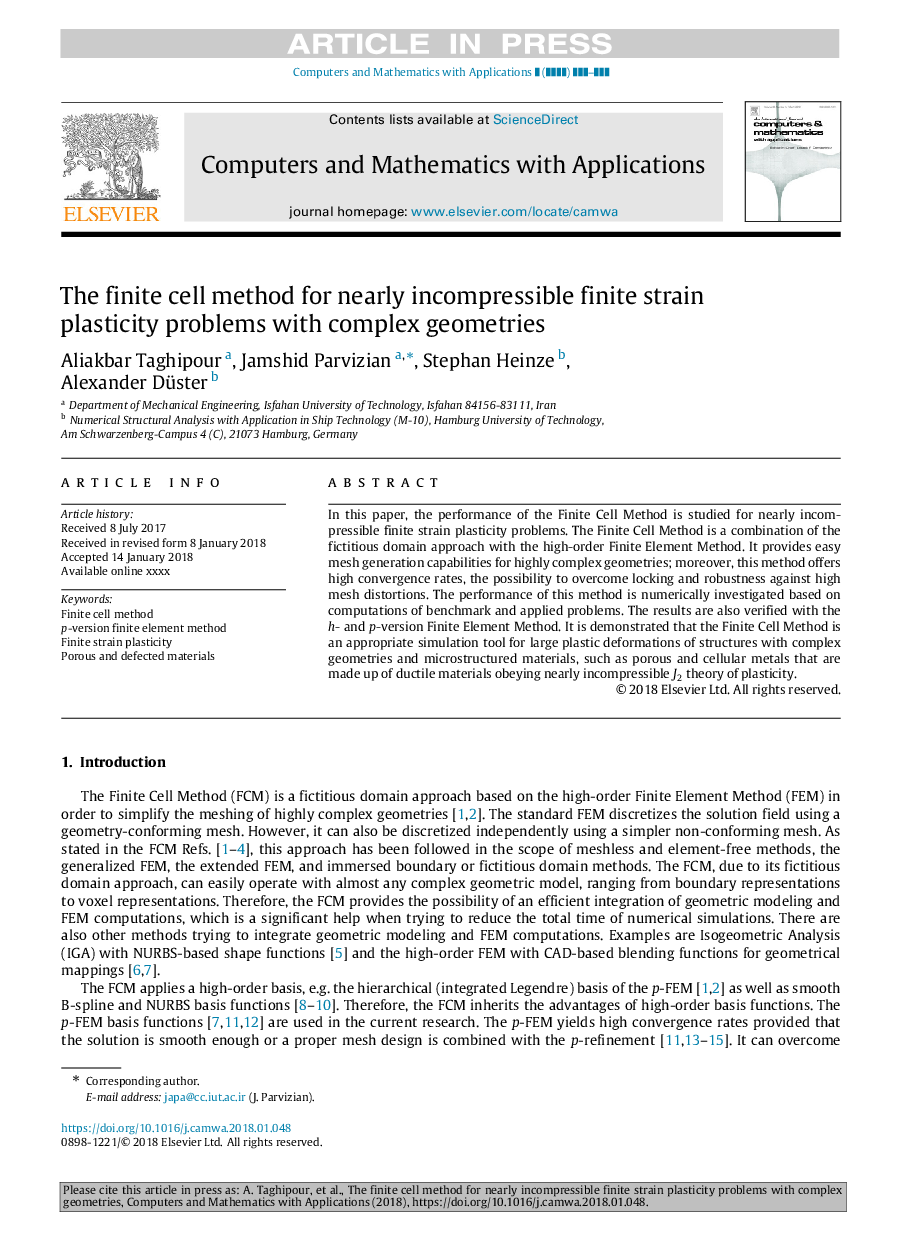| Article ID | Journal | Published Year | Pages | File Type |
|---|---|---|---|---|
| 6891938 | Computers & Mathematics with Applications | 2018 | 19 Pages |
Abstract
In this paper, the performance of the Finite Cell Method is studied for nearly incompressible finite strain plasticity problems. The Finite Cell Method is a combination of the fictitious domain approach with the high-order Finite Element Method. It provides easy mesh generation capabilities for highly complex geometries; moreover, this method offers high convergence rates, the possibility to overcome locking and robustness against high mesh distortions. The performance of this method is numerically investigated based on computations of benchmark and applied problems. The results are also verified with the h- and p-version Finite Element Method. It is demonstrated that the Finite Cell Method is an appropriate simulation tool for large plastic deformations of structures with complex geometries and microstructured materials, such as porous and cellular metals that are made up of ductile materials obeying nearly incompressible J2 theory of plasticity.
Related Topics
Physical Sciences and Engineering
Computer Science
Computer Science (General)
Authors
Aliakbar Taghipour, Jamshid Parvizian, Stephan Heinze, Alexander Düster,
